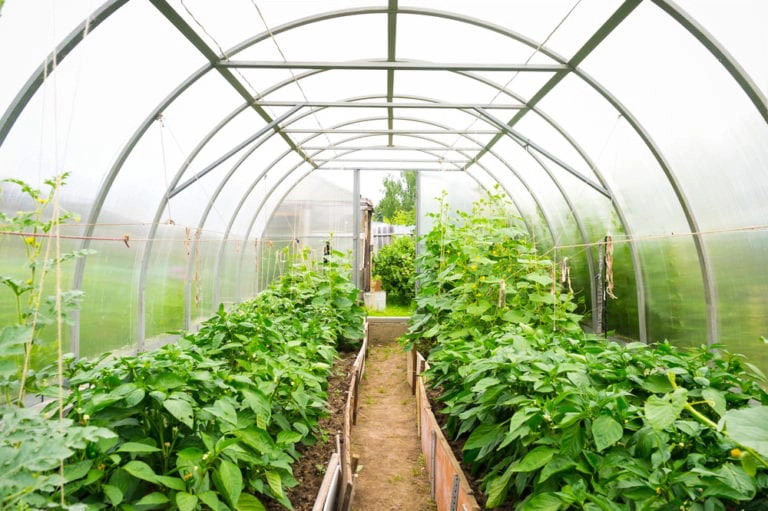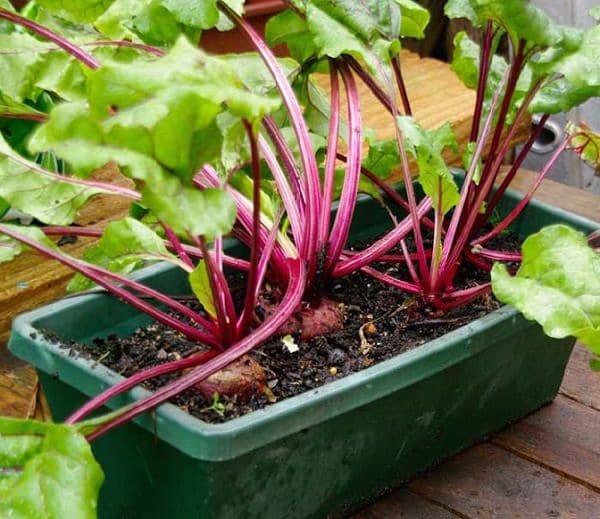Call us at 725-239-9966!
M-F: 8 AM-7 PM PST
Call us at 725-239-9966!
M-F: 8 AM-7 PM PST

Growing plants in an unheated greenhouse during the winter months allows gardeners in cold climates to extend their growing seasons. While an unheated greenhouse lacks the climate control of a heated model, strategic planning and proper care can help you successfully overwinter plants and start seedlings early.
Read on for a complete guide to using an unheated greenhouse in the colder seasons.
Start seeds in an unheated greenhouse 4-6 weeks before your last spring frost to get a head start on the growing season. Good options are tomatoes, peppers, and annual flowers.
Grow cold-hardy greens like spinach, kale, lettuce, and herbs for fresh winter harvests in the greenhouse. Carrots, beets, and brassicas also do well.
Use a minimum thermometer to monitor temperatures. Keep the greenhouse above 45-55°F at night to prevent plant damage. Ventilate on sunny days.
Overwinter tender perennials like fuchsias and citrus trees in the greenhouse. Reduce water and let plants go dormant.
Insulate the greenhouse to keep plants 5-10°F warmer on freezing nights. Prioritize cold protection over growth.

Determining the right time to begin using your unheated greenhouse depends on your climate and the types of plants you want to grow.
In most regions, an unheated greenhouse can be used starting in late winter to early spring to get a head start on the outdoor growing season. This is usually 4-6 weeks before your average last spring frost date.
For example, if your last frost date typically falls around May 1st, you'd want to begin using the greenhouse in mid to late March.
During these late winter and early spring months, the greenhouse lets you:
Start warm-season vegetable and flower seedlings like tomatoes, peppers, and marigolds to replant outdoors after the danger of frost has passed.
Begin growing cold-tolerant crops like spinach, lettuce, peas, and brassicas directly in the greenhouse to harvest fresh produce weeks earlier than outdoor sowing.
While an unheated greenhouse lacks the temperature control of a heated one, it can still be used to grow greens and overwinter tender plants during the winter in many climates.
In USDA Hardiness Zones 6 and up, the greenhouse can provide enough protection for cold-tolerant vegetables to continue producing through the winter months with minimal heat sources needed.
Even in colder zones like 4 and 5, the greenhouse can help extend the green season into late fall and early winter. While most full-season vegetable growing isn’t possible throughout winter without heat, you can still:
Grow quick-crop greens like spinach, kale, arugula, and baby leaf lettuces for fresh winter harvests.
Overwinter potted herbs like rosemary, thyme, and sage.
Protect semi-hardy perennials like fuchsias and geraniums to plant back out in spring.
Shelter citrus and other tender plants from freezing nights.
It’s important to have realistic expectations about what you can grow in an unheated greenhouse over the winter.
The main goal is to safely overwinter plants, not actively grow them at optimal rates. While growth will slow, many plants can survive surprisingly low greenhouse temperatures with proper care.
Exposure to some cold is actually beneficial for many vegetables and perennials in an unheated structure. It encourages them to go dormant, building energy reserves for renewed spring growth.
Don’t expect fast, lush growth and fruiting from warm-season annuals like tomatoes during the cooler months. Focus instead on growing cold-tolerant greens and root crops that can thrive in the cooler greenhouse temperatures.

While plants need less heat in a sheltered greenhouse than exposed outdoors, maintaining the best temperature range still helps them thrive through the winter.
As a general rule, you want to keep the greenhouse's interior temperature no lower than 45-55°F (7-12°C) on cold nights and days. Prolonged exposure to temperatures lower than this threshold can damage and kill many plants.
If overnight lows outside are forecast to drop below 20°F (-7°C), additional heat will be needed to keep the greenhouse interior warm enough. Passive solar warming during the day also boosts temperatures.
A minimum temperature thermometer placed at plant level lets you easily monitor the greenhouse and determine if additional heating is required.
During daylight hours, the ideal temperature range for most unheated greenhouse plants is 55-75°F (13-24°C). Some variations depending on the crop:
Most leafy greens and root crops grow well between 55-68°F (13-20°C).
Cool-season annuals like pansies and snapdragons thrive around 60-65°F (16-18°C).
Perennials, orchids, and citrus prefer 65-75°F (18-24°C) during the day.
Ventilation is critical to prevent excessive heat buildup on sunny winter days, which can damage plants. Open vents and doors to maintain temperatures in the optimal range.
Ideally, the temperature inside the greenhouse should remain above 45-50°F (7-10°C) overnight. This helps prevent plant damage and death.
Lower night temperatures are tolerated by some semi-hardy plants if the days are sufficiently warm. But most vegetables, annuals, and tropicals will suffer if nights drop below 40°F (4°C).

While an unheated greenhouse lacks the humidity and consistent warmth of a heated model, a surprising variety of plants can grow in cooler conditions if selected and cared for properly.
Some of the easiest unheated greenhouse crops for winter growing include:
Leafy greens - Spinach, lettuce, kale, chard, arugula. Choose frost-hardy and fast-maturing varieties.
Root vegetables - Carrots, turnips, radishes, beets. Grow in containers for easy harvest.
Peas and brassicas - Sugar snap and snow peas, broccoli, cabbage, brussels sprouts. Start seeds in late winter.
Onions and garlic - Start sets for spring planting to get a head start on bulbing.
Many culinary herbs thrive year-round in an unheated greenhouse. Options include:
Rosemary, sage, thyme - Move established plants in containers into the greenhouse.
Parsley, cilantro, dill - Successive sowing inside allows fresh harvests.
Chives, oregano, mint - Pot up divisions for winter greenhouse growing.
Get a jump start on the outdoor planting season by starting seeds in the unheated greenhouse as early as late winter, depending on your climate. You can grow:
Warm season annuals - Tomatoes, peppers, eggplants, etc. need 8-10 weeks of indoor growth before hardening off and replanting outside after the last spring frost.
Sun-loving perennials - Penstemons, lupines, rudbeckia, and echinacea do well seeded in trays for planting out in spring.
Cool-weather annuals - Pansies, snapdragons, calendulas, and poppies can be started 4-6 weeks before your last expected frost to bulk up before transplanting into the garden.
Many semi-hardy potted perennials like fuchsias, geraniums, and lemon trees can be overwintered in an unheated greenhouse. This saves the hassle of moving them indoors and back out the following spring.
To help plants thrive through the winter months in an unheated greenhouse:
Proper ventilation is vital in a greenhouse without heat. It prevents excessive heat and humidity build-ups on sunny days that lead to disease and plant damage.
Greenhouses with lots of vents or a roof that rolls open provide the best air circulation for winter growing.
On mild days >50°F (10°C), open vents/doors and use fans to keep air moving through the greenhouse. Close up at night to conserve warmth.
Avoid humidity build-up by watering plants early in the day so they dry out by nightfall.
Plants need less watering in colder temperatures. Check soil moisture regularly and avoid overwatering, which invites fungal disease.
When daytime greenhouse temperatures are < 60°F (16°C), only water when the top 1-2" of soil becomes dry.
For dormant plants like perennials and shrubs, reduce watering further to just every 2-3 weeks, providing only enough moisture to prevent shriveling.
Use covers and blankets to protect plants if hard freezes threaten:
Cover seedlings and tender plants with breathable row fabric or horticultural fleece overnight on cold nights. Remove during the day to allow airflow.
Use cloches, cold frames, or low tunnels over plants for an extra layer of insulation against freezing.
Move potted plants together near the greenhouse perimeter to share warmth. Avoid drafty areas.

While heating a greenhouse is the ultimate way to control growing conditions year-round, the following strategies can bolster plant growth during winter without supplemental heat:
Select vegetables and flowers specifically bred to handle cooler temperatures. Good options include:
Arugula, mâche, chard, kale, and Asian greens for cold-hardy salad mixes.
Beet, turnip, carrot, and radish varieties developed for overwintering and early spring harvest.
Pansy, ornamental kale, and dragon varieties are meant for cool weather color.
Cabbage, Brussels sprouts, and broccoli cultivars with enhanced cold resistance.
Passive solar heating during the day can raise temperatures significantly in a greenhouse.
Select a greenhouse with glazing that transmits maximum sunlight - tempered glass or polycarbonate panels.
Whitewash the exterior surface to reflect more sunlight inside.
Add mass like water containers and masonry to absorb and slowly release solar warmth.
Stop conductive heat loss through the frame and foundation at night by consulting our greenhouse buyer's guide for ideal insulation materials such as:
Insulating foam sheets on the ground and perimeter.
Burying the foundation or wrapping the stem wall in insulation blankets.
Attaching bubble wrap layers to the interior sidewalls and roof glazing.

While an unheated greenhouse lacks the carefully controlled environment of a heated model, there are still many possibilities for growing plants during the colder months.
Pay close attention to greenhouse ventilation, insulation, plant selection, and frost protection measures. Focus on cold-tolerant crops and damage prevention rather than maximum growth over the winter.
By following best practices for operating an unheated greenhouse, gardeners can expand their planting seasons into the winter in all but the coldest climates. The right preparations and care will allow most plants to survive and even gradually grow through the cooler conditions.
Yes, you can definitely use an unheated greenhouse to start vegetables. However, you need to make sure that the greenhouse provides enough protection from low temperatures and frost. Some vegetables that can be started in an unheated greenhouse include hardy greens, root vegetables, and cool-season crops.
To protect your plants from frost in an unheated greenhouse, you can use techniques such as covering the plants with frost blankets or row covers, using a small heater or heat lamp, or insulating the greenhouse with bubble wrap or thermal blankets.
Yes, you can start planting seedlings in an unheated greenhouse during the winter months. However, you need to be mindful of the outside temperatures and the particular plants you are growing. Some plants may not survive in extremely cold climates.
Yes, it is important to provide some form of ventilation for your unheated greenhouse in the winter. Proper ventilation helps to regulate moisture levels and prevents the buildup of fungal diseases. You can use vents or open doors and windows periodically to allow for airflow.
To protect your plants from low temperatures in an unheated greenhouse, you can use techniques such as mulching the soil, using insulating materials like straw or hay, or using portable heaters or heat mats. Be sure to monitor the temperature regularly to ensure the plants' well-being.
While it may be challenging, you can grow heat-loving plants in an unheated greenhouse if you provide extra precautions. You may need to use additional insulation, such as double-layered plastic, and consider using grow lights or other supplemental heating methods to create a warmer environment.
To retain heat in your unheated greenhouse, you can use various methods such as insulating the walls and roof with bubble wrap or thermal blankets, using a layer of mulch on the greenhouse floor, and closing the greenhouse vents and doors during cold periods.

{"one"=>"Select 2 or 3 items to compare", "other"=>"{{ count }} of 3 items selected"}
Leave a comment